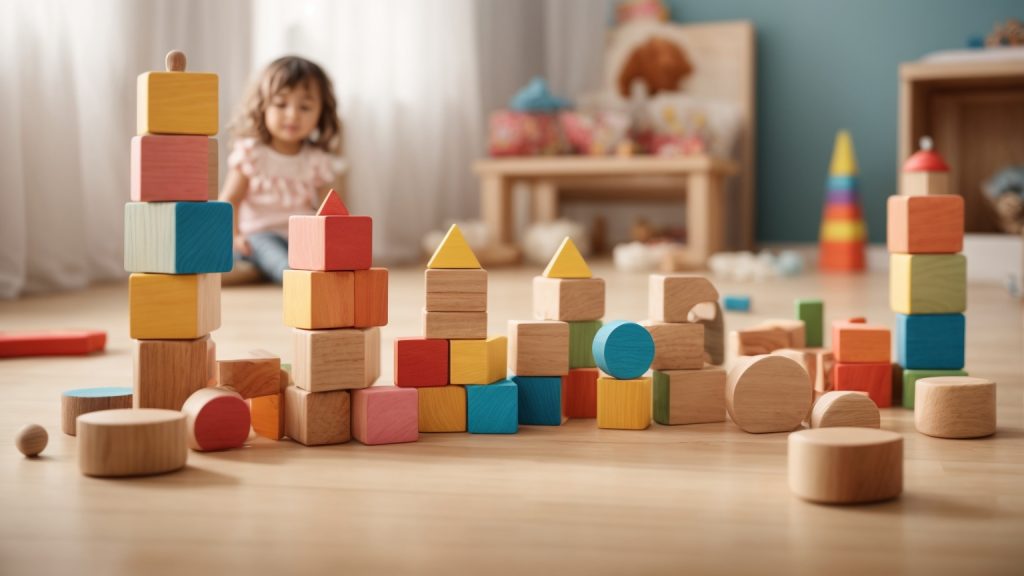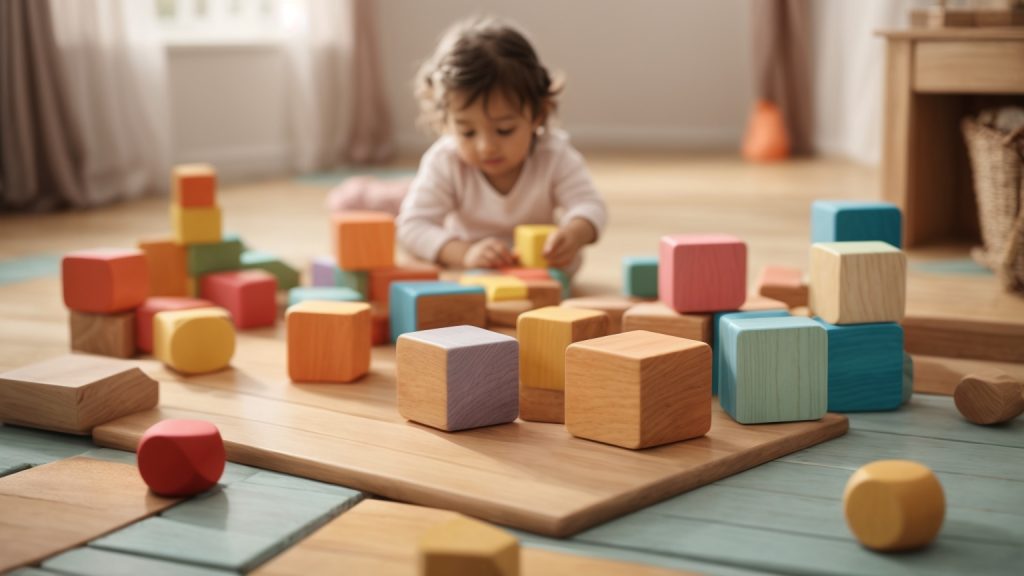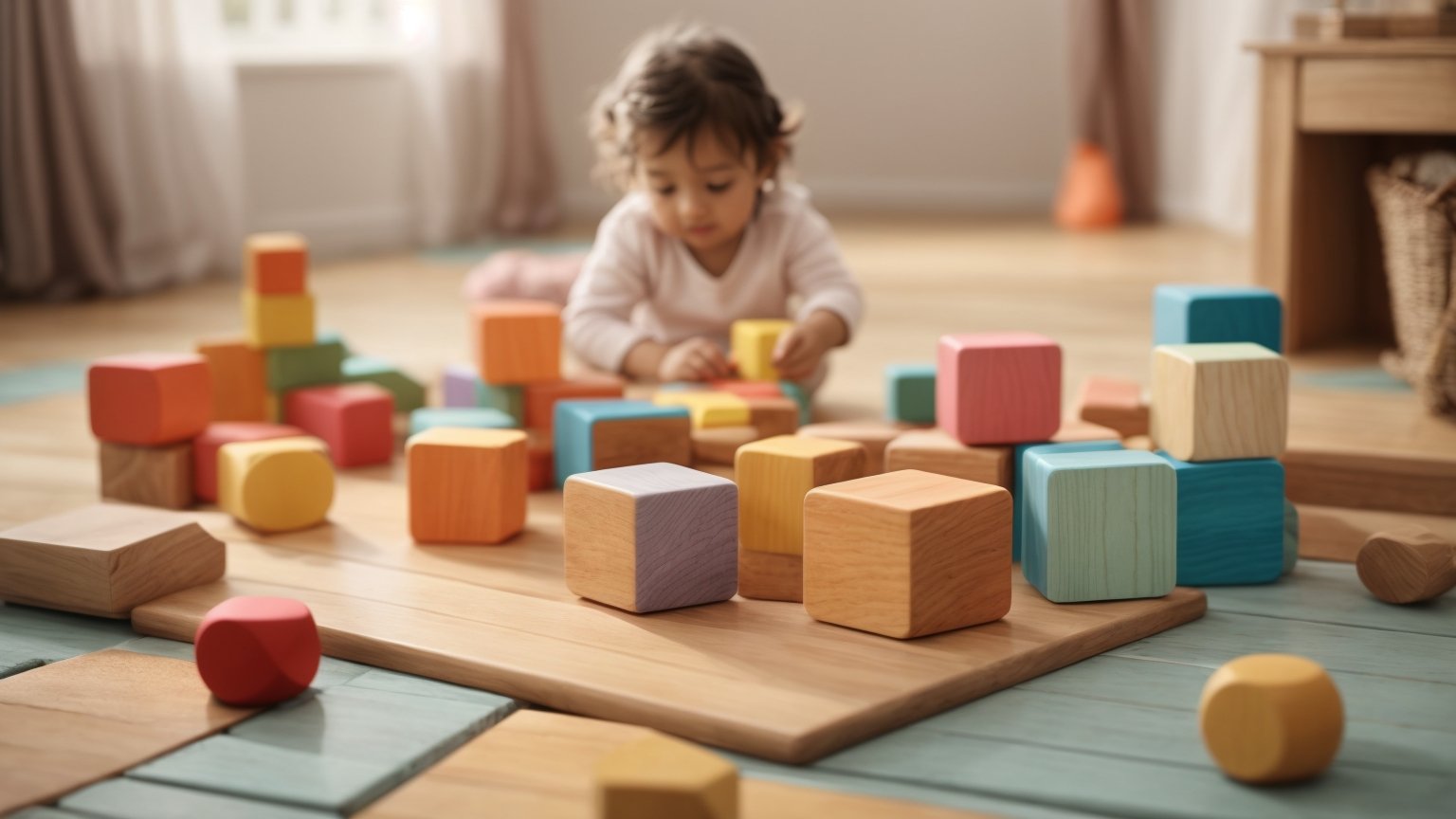Cleaning wooden blocks may seem like a daunting task, but it’s actually quite simple. Whether you’re a parent wanting to clean your child’s toys or a collector looking to restore old blocks, there are a few easy steps to follow. By properly cleaning your wooden blocks, you can ensure that they last for years to come.
First, it’s important to gather the necessary supplies. You will need a soft cloth, mild soap, and water. For tougher stains, vinegar and baking soda can be used. It’s important to note that only unpainted blocks should be sanded, as painted blocks can be damaged. Once you have your supplies, you’re ready to start cleaning your wooden blocks.
To clean your wooden blocks, simply dampen the cloth with water and mild soap and wipe down each block. For tougher stains, mix equal parts vinegar and water and use the solution to scrub the blocks with a sponge. If the stain still won’t come out, try lightly sanding the block with fine sandpaper. Once you’re done cleaning, be sure to let the blocks air dry completely before storing them away.
Understanding the Importance of Cleaning Wooden Blocks

Cleaning your child’s wooden blocks is essential for their health and safety. Wooden blocks are a classic toy that has been around for centuries. They are durable and can last for years, but they can also harbor harmful bacteria if not cleaned regularly. Here are some reasons why cleaning wooden blocks is important:
Preventing the Spread of Germs
Children are notorious for putting things in their mouths, and wooden blocks are no exception. If the blocks are not cleaned regularly, they can harbor harmful bacteria that can make your child sick. By cleaning the blocks regularly, you can prevent the spread of germs and keep your child healthy.
Maintaining the Quality of the Blocks
Wooden blocks can become dirty and stained over time, which can affect their quality. By cleaning the blocks regularly, you can maintain their quality and ensure that they last for years to come. Regular cleaning can also prevent the wood from drying out and cracking.
Promoting a Safe Play Environment
Cleaning your child’s toys is an important part of creating a safe play environment. By keeping the blocks clean, you can reduce the risk of accidents and injuries. Dirty blocks can become slippery and difficult to handle, which can increase the risk of falls and other accidents.
In summary, cleaning your child’s wooden blocks is essential for their health and safety. By preventing the spread of germs, maintaining the quality of the blocks, and promoting a safe play environment, you can ensure that your child’s wooden blocks are a fun and safe toy to play with.
Materials Required for Cleaning
Cleaning wooden blocks is a simple process that requires only a few materials. Here is a list of the materials you will need:
- Warm water
- Eco-friendly dish soap
- White vinegar
- Spray bottle
- Soft-bristled brush
- Microfiber cloth
Warm water mixed with eco-friendly dish soap is an effective and safe cleaning solution for wooden blocks. You can mix one part soap with four parts water and place it in a spray bottle for easy application. Alternatively, you can use a natural disinfectant solution made from white vinegar and water in a ratio of one part vinegar to two parts water.
A soft-bristled brush is useful for removing dirt and grime from the blocks’ crevices and corners. A microfiber cloth can be used to wipe the blocks clean after washing. It is essential to avoid using abrasive materials like steel wool or harsh chemicals that can damage the wood’s surface.
In addition to the above materials, you will need a designated cleaning area covered with a drop cloth or old towel to catch any drips or spills. It is also essential to have a drying rack or a clean towel to dry the blocks after washing them.
By using these simple materials, you can effectively clean your wooden blocks and keep them looking their best for years to come.
Pre-Cleaning Steps
Before you start cleaning your wooden blocks, there are a few pre-cleaning steps you should take to ensure the best results.
Inspecting the Blocks
The first step is to inspect your wooden blocks. Check for any visible signs of damage or wear and tear. Look for cracks, splits, or splinters in the wood. If you find any damaged blocks, set them aside for repair or replacement.
Sorting the Blocks
Once you’ve inspected your blocks, the next step is to sort them. Group the blocks by size, shape, and color. This will make it easier to clean them efficiently and thoroughly.
Here are some tips for sorting your blocks:
- Sort the blocks into piles based on their size.
- Group the blocks by shape (cubes, rectangles, triangles, etc.).
- Separate the blocks by color (natural wood, painted, stained, etc.).
By sorting your blocks, you’ll be able to clean them more effectively and efficiently. It will also make it easier to put them back together once they’re clean.
Taking these pre-cleaning steps will ensure that your wooden blocks are ready for cleaning. By inspecting and sorting your blocks, you’ll be able to clean them more effectively and efficiently.
Cleaning Process

Cleaning your wooden blocks is an important step to keep them in good condition and ensure they last for years to come. Here is a step-by-step guide on how to clean your wooden blocks:
Preparing the Cleaning Solution
First, you need to prepare the cleaning solution. Mix one part white vinegar with one part water in a bowl. If the blocks are heavily soiled, add a small amount of mild dish soap to the solution.
Applying the Solution
Dip a sponge or soft cloth into the cleaning solution and wring it out. Then, gently wipe down each block with the damp sponge or cloth. Make sure to cover all sides of the block, including any crevices or corners.
Scrubbing the Blocks
For stubborn stains or marks on the blocks, use a soft-bristled brush to scrub the affected area. You can also lightly sand the blocks with fine sandpaper to remove any stains or discoloration, but only do this for unpainted blocks.
Rinsing and Drying
Once you have finished cleaning the blocks, rinse them thoroughly with clean water to remove any remaining cleaning solution. Then, dry the blocks with a clean towel, and let them air dry completely before storing them away.
By following these simple steps, you can keep your wooden blocks clean and in good shape for years to come.
Post-Cleaning Care
After cleaning your wooden blocks, it’s important to take proper care of them to ensure they last a long time. Here are some tips for post-cleaning care:
Proper Storage
Storing your wooden blocks properly is crucial to maintaining their quality. Here are some things to keep in mind:
- Keep your blocks in a dry, cool place. Moisture can cause the wood to warp or crack.
- Store your blocks in a container or on a shelf. This will help protect them from dust and dirt.
- Don’t stack your blocks too high. This can cause them to become misshapen or damaged.
Regular Maintenance
Regular maintenance can help keep your wooden blocks looking and feeling great. Here are some things you can do:
- Oil your blocks with mineral oil or beeswax every few months. This will help keep the wood from drying out and cracking.
- Inspect your blocks regularly for any signs of damage or wear. If you notice any issues, address them as soon as possible to prevent further damage.
- Keep your blocks clean by wiping them down with a damp cloth after each use. This will help prevent dirt and grime from building up on the surface.
By following these tips, you can help ensure that your wooden blocks stay in great condition for years to come.
Tips and Tricks for Effective Cleaning
Cleaning wooden blocks can be a simple and enjoyable task, but it’s important to do it right to ensure the longevity and safety of your toys. Here are some tips and tricks for effective cleaning:
- Use warm water and a mild dish soap or a natural disinfectant solution of white vinegar and water. Avoid using harsh chemicals or abrasive cleaners that can damage the wood or paint.
- Dip a clean cloth into the soapy water and wring it out well before wiping the blocks. You can also use a soft-bristled brush or a toothbrush to clean hard-to-reach areas.
- Avoid immersing, soaking, or putting your wooden blocks in the dishwasher, as this can cause warping, cracking, or discoloration.
- Dry the blocks thoroughly with a clean towel or let them air dry before storing them. Avoid using a hair dryer or placing them in direct sunlight, as this can cause the wood to dry out and crack.
- If your wooden blocks have stains or marks that won’t come off with soap and water, you can try rubbing them gently with a cloth dipped in olive oil or mineral oil. This can help restore the natural shine and color of the wood.
- To prevent mold or mildew from forming on your wooden blocks, store them in a dry and well-ventilated area. Avoid storing them in damp or humid places like basements or bathrooms.
- If you have vintage or antique wooden blocks, be extra careful when cleaning them, as they may be more fragile or delicate than newer blocks. You may want to consult a professional restoration expert or do some research on the best cleaning methods for your specific type of blocks.
By following these tips and tricks, you can keep your wooden blocks clean, safe, and beautiful for years to come.
Safety Measures While Cleaning
Cleaning wooden blocks is a great way to keep them looking their best, but it’s important to take some safety measures to ensure that you don’t damage the blocks or injure yourself in the process. Here are some tips to help you clean your wooden blocks safely:
- Wear gloves: Wooden blocks can be rough and splintery, so it’s a good idea to wear gloves while cleaning them to protect your hands.
- Use a soft brush: A soft-bristled brush, such as a toothbrush or a paintbrush, is ideal for cleaning wooden blocks. Avoid using stiff brushes or abrasive materials that could scratch or damage the blocks.
- Avoid water damage: Wooden blocks can warp or crack if they get too wet, so it’s important to avoid using too much water while cleaning them. Use a damp cloth or a spray bottle to lightly mist the blocks, rather than soaking them in water.
- Test cleaning products: Before using any cleaning products on your wooden blocks, test them on a small, inconspicuous area first to make sure that they don’t cause any damage or discoloration.
- Keep blocks away from heat sources: Wooden blocks are flammable, so it’s important to keep them away from heat sources while cleaning them. Avoid using hot water or heat guns to dry the blocks, and don’t leave them near heaters or open flames.
By following these safety measures, you can ensure that your wooden blocks stay in great condition for years to come, while also protecting yourself from injury and damage.
